Chaos in Gaza as thousands break into UN aid stores in search of food and medical supplies
UN says ‘civil order is starting to break down’ as key hospital in Gaza ‘ordered to evacuate’
Thousands of desperate Gazans have broken into aid warehouses to obtain flour and basic survival items in what the UN has called a “worrying sign” that civil order is breaking down in the strip.
Footage from Khan Younis in southern Gaza showed people carrying boxes and large bags out of a warehouse on Sunday, filled with food items like flour and basic hygiene supplies.
The United Nations’ Relief and Works Agency for Palestinian refugee agency (UNRWA) said people in Gaza are “scared, frustrated and desperate” after three weeks of Israel’s relentless bombing and siege on the enclave.
“Tensions and fear are made worse by the cuts in the phones and internet communication lines,” UNRWA’s Gaza director Thomas White said. “They feel that they are on their own, cut off from their families inside Gaza and the rest of the world.”
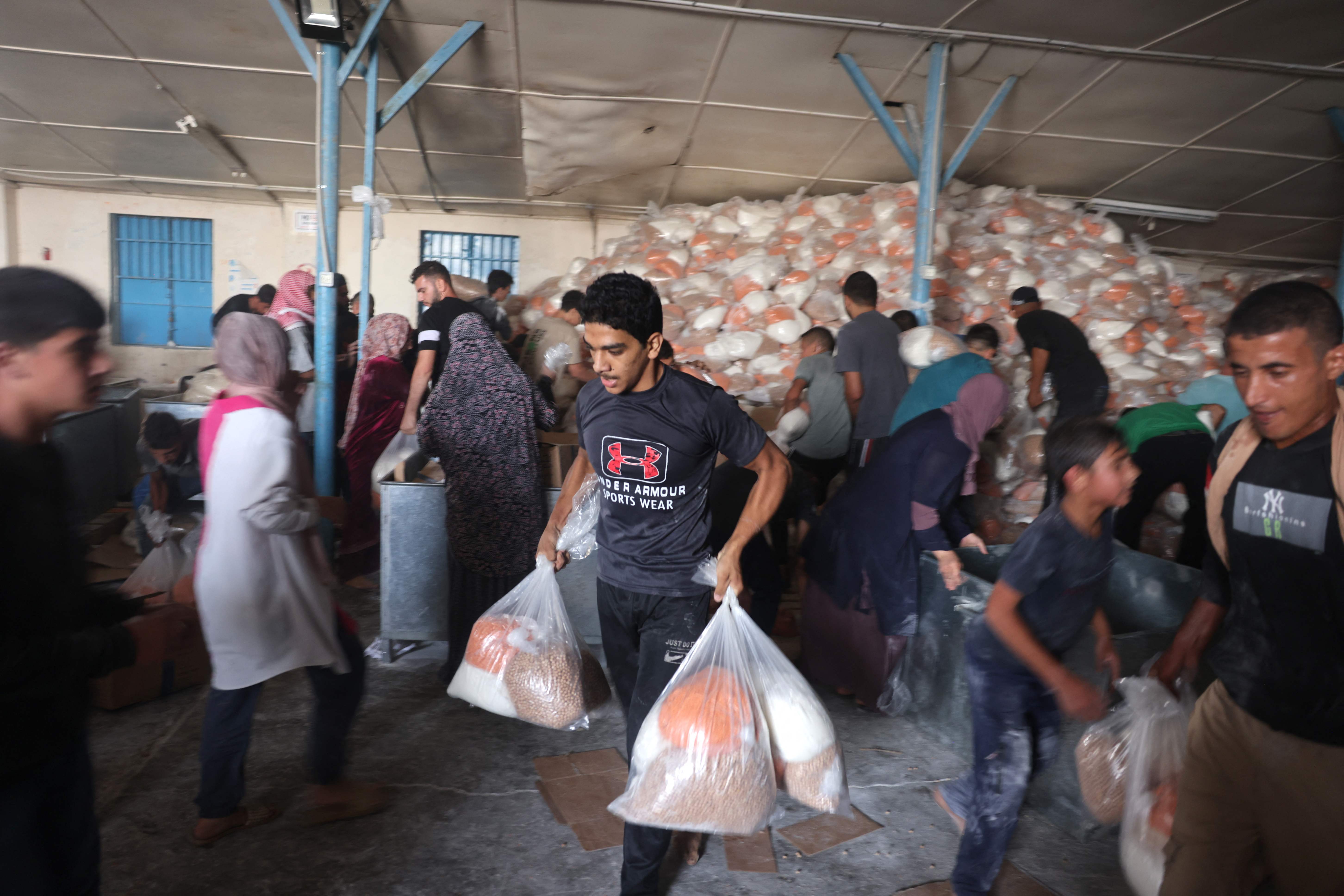
The UN has said that more aid is urgently needed, citing hunger, water-borne diseases and dehydration. “The needs of the communities are immense, if only for basic survival, while the aid we receive is meagre and inconsistent,” Mr White added.
Juliette Toma, a spokesperson for UNRWA, which has lost 59 staffers in the bombardment, told The Independent the raided centres were located in the centre and south of Gaza, in areas where civilians have been ordered to evacuate to by Israel.
The massive displacement of people from the north of the Gaza Strip to the south has placed enormous pressure on those communities, adding further burden on crumbling public services. Some families received up to 50 relatives taking shelter in one household.
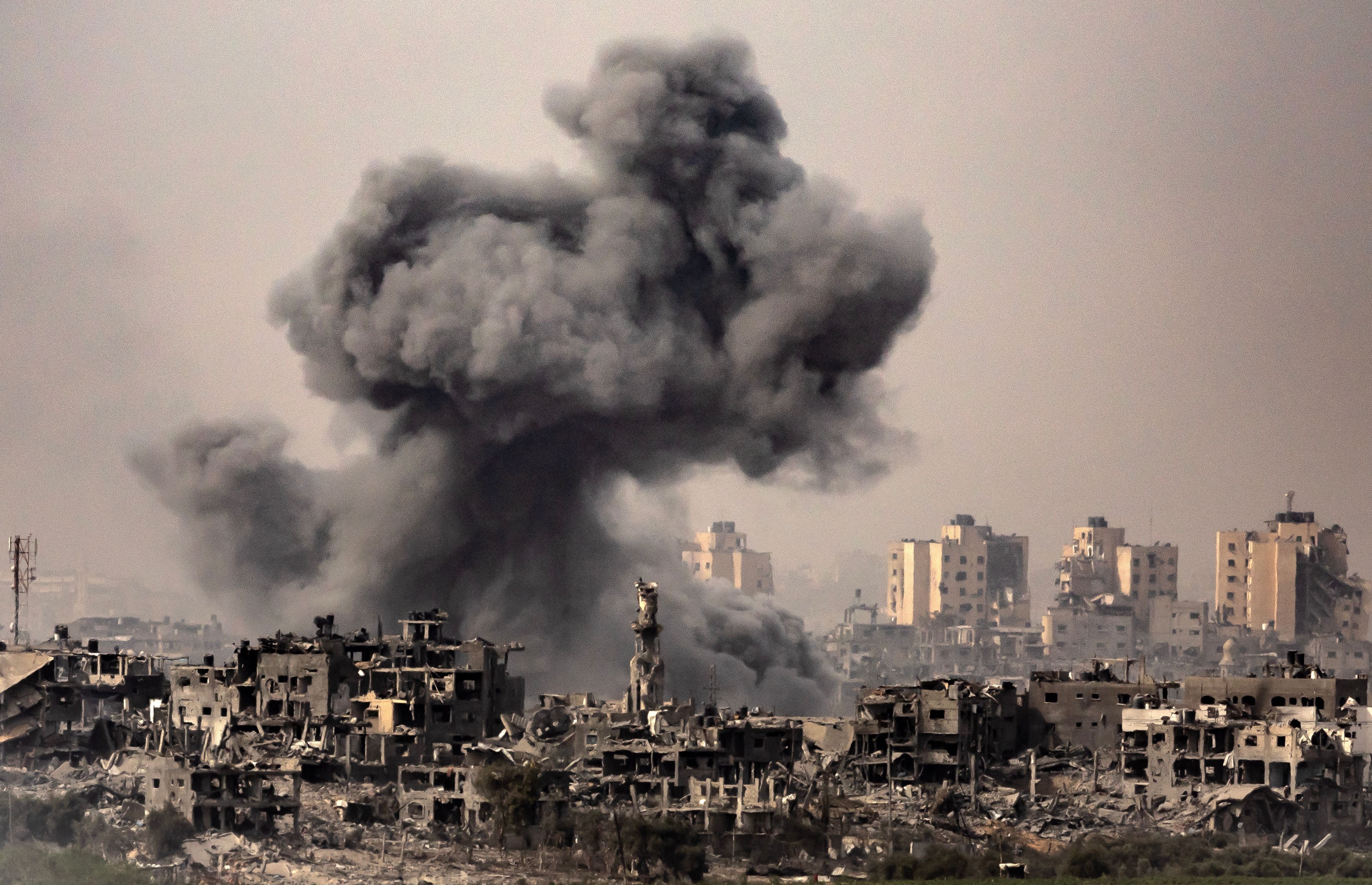
Ms Toma warned food was rapidly running out in the markets across Gaza, which is home to over 2 million people, half of them children.
“People have been living under a very tight siege and a brutal war for the past three-plus weeks. They are frustrated, tired, hungry, shocked and they are in trauma, they have lost so much,” she said.
“The blackout of communications created panic and increased a sense of isolation.”
Israel has unleashed its heaviest-ever bombardment of Gaza in retaliation for a bloody 7 October attack on southern Israel by Hamas militants, who killed hundreds of people and took dozens hostage, including babies and the elderly.
On Sunday, the Israeli military signalled intent to encircle Gaza’s main city, publishing pictures of battle tanks on the Palestinian enclave’s western coast 48 hours after ordering expanded ground incursions across its eastern border.
The Hamas military wing said its militants clashed with Israeli troops who entered the northwest Gaza Strip with small arms and anti-tank missiles. Palestinian militants have continued firing rockets into Israel, including towards its commercial hub, Tel Aviv.
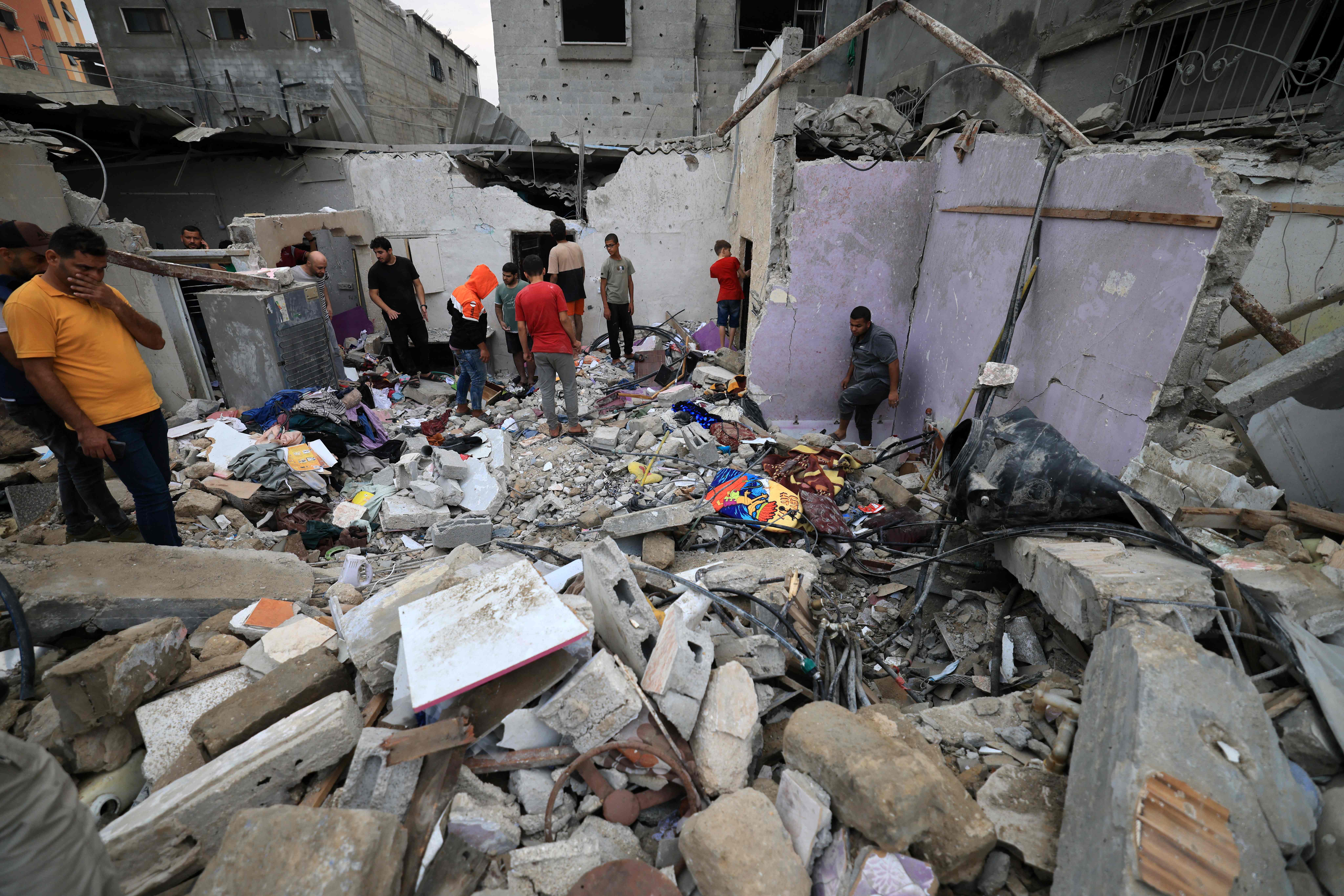
Since its bombardment began, Israel has imposed a crippling siege on Gaza, cutting off water, food, power, medical supplies and fuel needed for generators. It blocked fuel citing concerns it would end up being used by Hamas to power rockets.
The health ministry in Hamas-ruled Gaza has reported that more than 8,000 have been killed in the past three weeks. That is nearly four times the total Palestinian death toll of the seven-week war between Israel and Hamas in 2014.
Save the Children said that more than 3,100 children have been killed in the enclave in that time, surpassing the annual number of children killed across the world’s conflict zones since 2019.
The UN has repeated calls for a humanitarian ceasefire to allow the delivery of aid and evacuation of the most vulnerable. On Friday, the UN’s General Assembly overwhelmingly approved a non-binding resolution calling for “an immediate, durable and sustained humanitarian truce”, an act Israel’s foreign minister rejected as “despicable”.
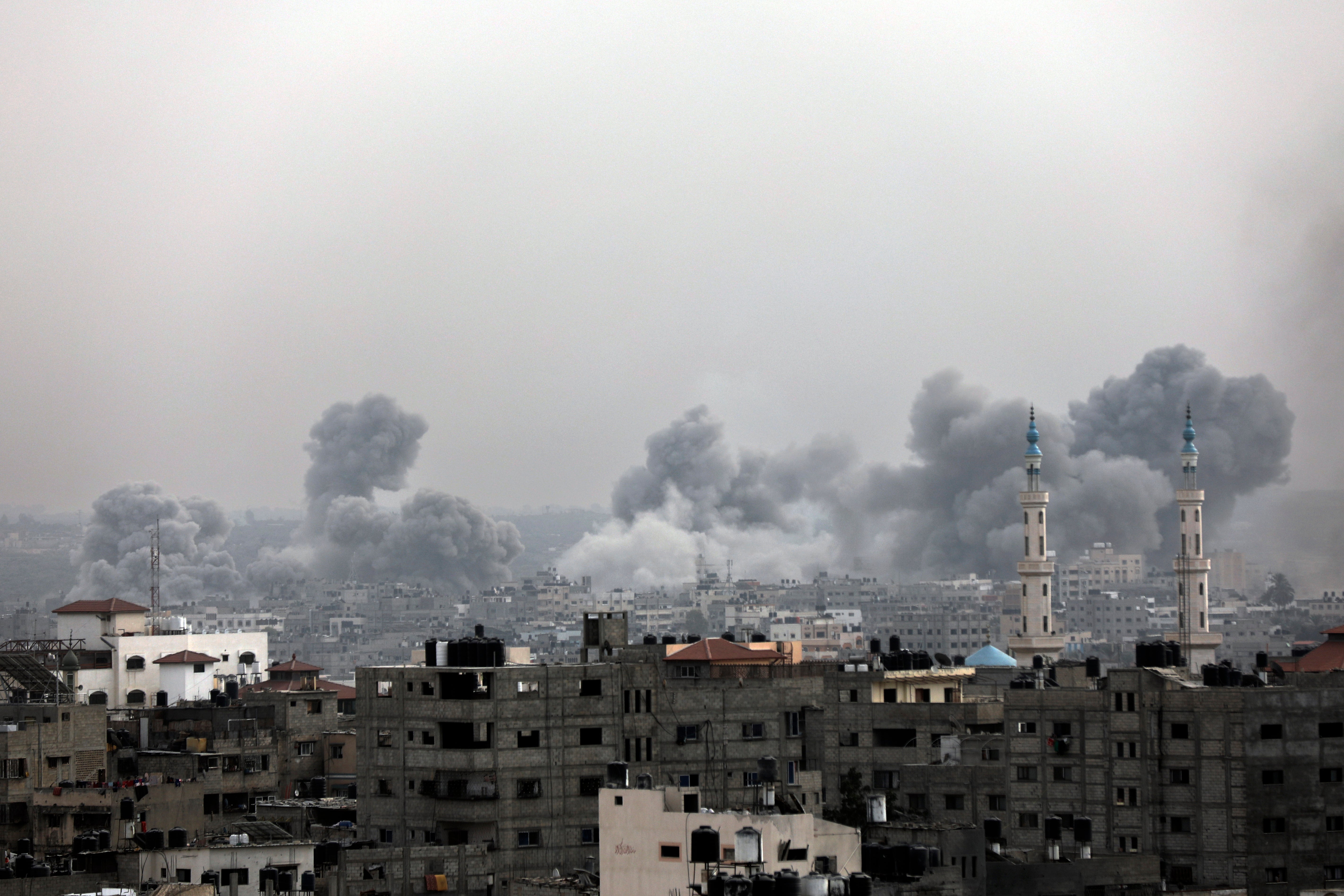
So far no pause has been announced and only a trickle of aid has been allowed in. Ms Toma said since 7 October, just 80 trucks of aid have been allowed into Gaza, down from 500 a day before the war.
“We need a steady flow of supplies that come into the Gaza Strip,” she added.
Cogat, the Israeli defence agency that usually liaises with Palestinians, admitted that there was “humanitarian distress” in Gaza but denied people were running out of food.
“There is food supply within Gaza for weeks to come,” said Colonel Elad Goren, a Cogat spokesperson, without providing details. In a Sunday briefing, he claimed that Hamas militants had also stockpiled supplies including fuel, which they were withholding from civilians.
He said in the coming week Israel was “planning to increase dramatically the amount of assistance” to Gaza and encouraged Palestinian civilians to evacaute the north of the strip and head to a designated “humanitarian zone” in the south of the territory.
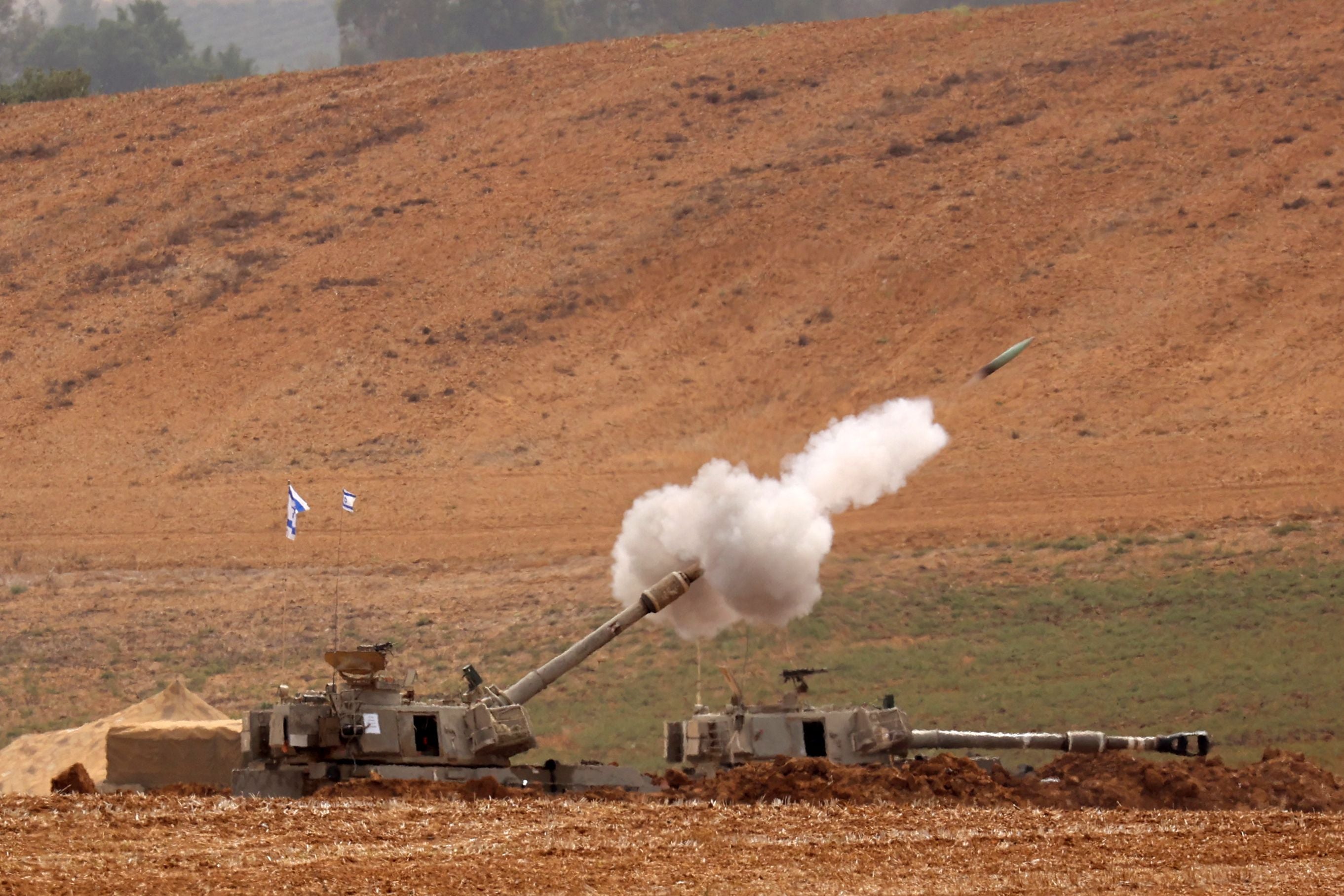
Meanwhile, the Palestinian Red Crescent said on Sunday it received warnings from Israeli authorities to immediately evacuate al-Quds hospital in the Gaza Strip and said there had been raids 50m away from the hospital. The World Health Organisation has said it is impossible to evacuate the hospital and evacuation orders may amount to forcible transfer.
It comes after Gaza was plunged into darkness on Friday as mobile, internet and landline services were cut when the Israeli military announced it was “expanding” its ground activity inside the strip and sent in troops and tanks.
For 24 hours, the besieged enclave was under heavy bombardment from the air, sea and ground. Along the border with Israel, the boom of outgoing Israeli fire was constant. Israel said its fighter jets had struck 450 targets in the last day alone.

When some mobile networks were restored on Sunday, doctors inside Gaza told The Independent it had been the heaviest night of fire they had endured.
Ghassan Abu Sitta, a British-Palestinian surgeon who is working for Doctors Without Borders inside Gaza’s largest hospital, said he thought when the blackout occurred “that was going to be it”.
“The buildings were just shaking, when you stepped outside the artillery shells were going over Shifa Hospital,” he said, adding that the situation was “catastrophic”.

Without mobile networks, families were unable to call first responders and so “ambulances were just going blindly in the direction of the shelling to pick up the wounded,” Mr Sitta added.
He also recorded receiving patients – including a 13 year old – with what he believed to be burns caused by white phosphorus. White phosphorus, a modern version of napalm, can be used for marking, signalling, and obscuring, or as a weapon to set fires.
Its use is prohibited under international law in densely populated areas because it inflicts such excruciating wounds. It can burn through flesh down to the bone and can cause multiple organ failure.
International rights groups Amnesty International and Human Rights Watch have separately accused Israel of using white phosphorus on Gaza and Lebanon since 7 October, saying they had verified videos and spoke to witnesses of the attacks. Israel has called the allegations “unequivocally false” and denied the use of the munitions.
Join our commenting forum
Join thought-provoking conversations, follow other Independent readers and see their replies
Comments
Bookmark popover
Removed from bookmarks